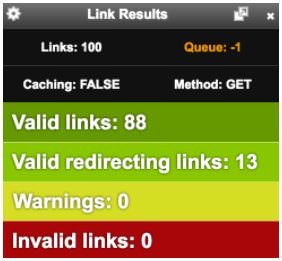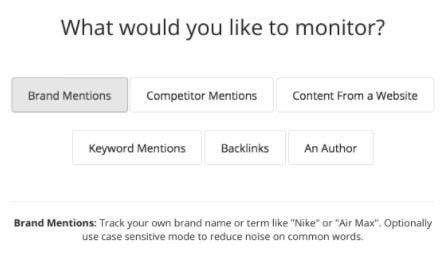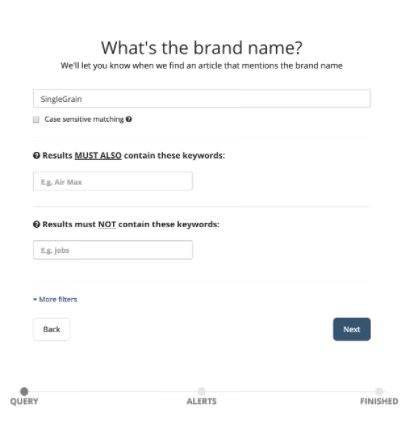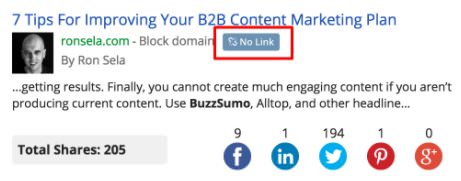I’m a big fan of minimalist SEO.
Once you have a basic grasp of technical SEO and have your site setup properly, 80-90% of your SEO results will come from creating comprehensive, valuable content.
However, if I had to pick one SEO tactic that really makes sense, it would be link building.
Backlinks tell Google that your site is valuable. It shows them that other sites around the web refer their readers to you. It’s kinda like they’re vouching for your quality and value to the whole internet.
It also helps drive new traffic directly from those sites. Whether it’s a blog mention or a forum post, well-placed links will drive traffic, which is usually your ultimate goal with SEO.
More traffic = better SERP rank. Companies like Google track how many views your site is getting, how long users hang around, where they go and much more. You didn’t think they spent so much time and money building Google Analytics because they were feeling nice one day, did you?
Well, they didn’t.
What Google has gained from building tools like Google Analytics and the Chrome browser is a much better insight into how people are behaving online down to the specific webpage.
If this new traffic actually likes your content and sticks around to read it, search engines will assume it’s providing value and reward you with better placement in their results. Even better if you have a collection of resources that encourage the reader to dig deeper into your site.
The first step is creating a valuable product or service, the next is creating helpful, engaging content. After you have that in place, you need to start looking at earning some backlinks.
Link building is the process of securing backlinks for your website. That is, links that point back to your site from a different, independent website.
They’re called backlinks because they send traffic from their site back to yours. What you call a backlink, the referring site will probably call an outlink. Which is just the opposite – a link that points away from your site to another.
Search engines use links in two important ways:
- The discovery of new web pages
- To determine how valuable a page is, and thus, how well it should rank.
Search engines like Google develop their results by “crawling” the web with automated programs that index all of a page’s content and then follow its links to discover and index new pages (and then follow its links on to more pages, and so on until it captures every corner of the web it can find).
This is important because if a page isn’t indexed, it can never show up in search results. However, Google and most major search engines are extremely efficient at crawling the web and unless you’re creating some spammy, isolated website, they’ll probably find you soon enough.
The real value of link building comes from point #2. The most notable example is Google’s PageRank. They assign a quality score to nearly every site and even most pages online. This score is developed based on the number and quality of links pointing to it from various sources around the web.
Just any old link won’t do though. Search engines value links if they come from relevant, high-quality, authoritative sources.
A link from SingleGrain.com will earn you a lot more SEO value than one from your friend’s #MarketingHustle Tumblr blog. (it’s somebody’s lucky day)
This is primarily determined by two factors:
- Referring PageRank – both the PageRank of the entire website and that of the individual page hosting the link.
- Relevancy – if the content linking to you is relevant to similar keywords, Google will weight it heavier. They even examine the keyword specifically surrounding your link to determine relevancy for pages covering a variety of topics.
No one knows the exact algorithm used by specific search engines like Bing or Google (after all, that’s their secret sauce).
But we know that these two factors are pretty important from occasional press releases and testing.
This is sometimes referred to as “passing PageRank” because when sites link to you, they leverage their PageRank to vouch for you and contribute their score to yours.
In fact, a third factor determining how much PageRank get’s passed onto your site is the number of outbound links on the referring page. If an article has several dozen links, the boost provided to each is much less than if it only had 2 or 3.
There is only so much PageRank magic to go around and the more outbound links there are, the less they can each receive.
You probably already have a good idea of what sites are authoritative in your industry and niche. The ones everyone reads, the ones with great long-form content, the ones that consistently rank on the first page of Google. But, if you’d like to go further into how Google determines the value of a link, checkout this overview by Neil Patel and Brian Dean.
One last thing to note is that you need to make sure your backlinks aren’t “nofollow” links.
By default, search engines use all the links they find to help determine your content’s value. But some sites guard their PageRank well and don’t like to hand it out to just anybody who comments on their blog.
With a simple line of code, you can take all the SEO value out of a link:
<a href=”http://www.example.com” rel=”nofollow”>Example</a>
To users, the link will look and work exactly the same. But this extra line of code tells search engines that you explicitly aren’t vouching for the quality of this link and don’t wish to pass on any PageRank.
It’s mostly used to prevent marketers from abusing low-value or hard-to-moderate opportunities for the public to post on a site like blog comments, guest post signatures, and public wiki pages.
These links can still be valuable for generating traffic and other marketing objectives, but as a tool for SEO, they’re almost completely useless.
If you build a great product, offer a fantastic service or create valuable content, then you should naturally start to build some links as people share your site. But you can certainly speed up the process by using a number of tactics.
There are hundreds of strategies and what works best for your will depend on your resources, connections, and industry, but here are some of the most popular tactics you can use in almost any industry…
Tactic 1 – Content Link Building
As I mentioned before, the best ways to generate backlinks is by creating compelling content that people want to share and link to.
You can easily start this by launching a blog or creating shareable content like infographics.
This is one of the best way to earn organic links. Which, like organic traffic, are links that just sort of happen without any additional effort to promote or advertise yourself. They develop as a result of being a valuable resource that people are searching for.
However, for links, your target isn’t necessarily readers and search engines, it’s other writers and brands that want to share your stuff with their readers. Generally, those values should be aligned, but it’s worth keeping in mind.
Because of this different, much smaller target audience, you don’t have to publish and cross your fingers. You can actually reach out directly to other websites and journalists to share your content with them. If what you produce is good, there’s a decent chance they’ll reference it in their work or share it with their audience.
The key here is to make it valuable for the other person and to avoid coming off as spammy and self-centered. Tell them why you think your content would be helpful for their readers.
It also pays to build a relationship with other marketers and journalist in your industry. If you put in the time to develop that, you will find them much more likely to help you out when you publish a new piece.
In fact, one marketer named Mike Bonadio found that by simply asking for permission before sharing his content, he more than doubled his response rate.

Here’s how he approached it…

There are also tons of freelancers and companies out there you can pay to handle outreach and secure backlinks on your behalf. Just make sure they’re finding quality links and not pumping you full of low-quality spammy referrals that could get your site penalized.
Tactic 2 – Skyscraper Technique
This is a specific application of content link building first written about by Brian Dean of Backlinko. And it’s pretty awesome.
He summarizes it in 3 easy steps.
- Find link-worthy content
- Create something even better
- Reach out to the right people
All you need to do is go online and find popular content relevant to your brand and target market. You can use tools like BuzzSumo, Ahrefs, and even Google to see what’s being shared and ranking well online.
Then create your own, better version. Go more in-depth, update the information, provide additional resources or case studies, create an infographic. However, you want to do it.
Then reach out to the managers of the site’s who are linking to the content you chose in step 1. An easy way to do this is by using ahrefs to export all the referring domains pointing to that webpage.
If you’ve truly created something more valuable and up-to-date, most managers will happily swap out the old piece for yours.
A little sneaky, but you know what they say – all is fair in love and war. And, content marketing?
Besides, it’s all in the name of creating a better internet for everyone!
Tactic 3 – Broken Link Building
This strategy involves finding broken links online and then helping site managers “fix” them by filling them with your content.
Here’s the fastest way to do it.
- Install “Check My Links.”
- Find pages on relevant sites with lots of outbound links.
- Use the extension to check for broken links.


Then, email the site owner about the broken link and offer a solution.
In step 4, that solution should be a something you created that provides the same or similar value to their audience.
Make sure to word your pitch as friendly advice. Tell them you really valued their content but noticed a broken link. Then suggest your content might be an easy fix, but don’t pressure them or insist they link to you.
Most people will appreciate the help and gladly give you the backlink.
Tactic 4 – Link Reclamation
This one is all about capitalizing on existing backlink opportunities that you’re missing out on.
Whenever your brand is mentioned online, it should be linked to. Whenever someone references your content or uses your images, it should be cited. However, not every writer prioritizes or even cares about this.
Link reclamation is all about finding those situations and politely asking the site manager to give you credit.
The best way to identify these opportunities is to use a tool like BuzzSumo to monitor brand mentions. They’ll even alert you when your brand has been mentioned without a referring link.
Just navigate to monitoring in the top nav bar:

Set up a “Brand Mention” campaign:


Fortunately, SingleGrain didn’t have any unlinked mentions. But if we were mentioned in any articles without a backlink to our site, it would look like this:

Then all you have to do is reach out with a quick email.
“Hey [name], I noticed that you mentioned me in your recent post [article name].
Thanks a lot for the support! I was hoping you wouldn’t mind including a link to our site, [www.domain.com], so your readers can find us easily!
Thanks a lot and keep up the great content!”
A variation of this strategy is to use Google’s reverse image search to identify sites using your assets without citing them.
Just download your infographic or image. Go to images.google.com. Upload your image by drag and drop or by clicking the camera icon and giving it a URL.
The results will include a majority of the time that images appears online (and some similar to it).
Check to make sure those pages are properly citing you as the source.
Now when you find someone misusing your images, you may be tempted to send them a nasty, threatening cease-and-desist email. Those thieves!
A lot of people would do that. But you’re smarter than most people.
Rather than letting ego get in the way, take this as an opportunity to start a relationship and earn a valuable backlink. Just send a similar email to the one above and ask them to give you credit for your work. They’ll certainly oblige.
If not, you can always send that tougher email you wanted to send to start with.
Building links is probably the most important thing you can do for SEO after creating compelling content.
Don’t stop with the tactics outlined above either. Get creative. And don’t stop at your blog content. You can build links to your products and services directly too if they’re valuable to readers.
By implementing these strategies (and creating link-worthy content) you’ll be well on your way to the first page of Google and every search engine around the web. Plus, you’ll start to build a name for yourself as an authority in the industry. That certainly won’t hurt your business.
